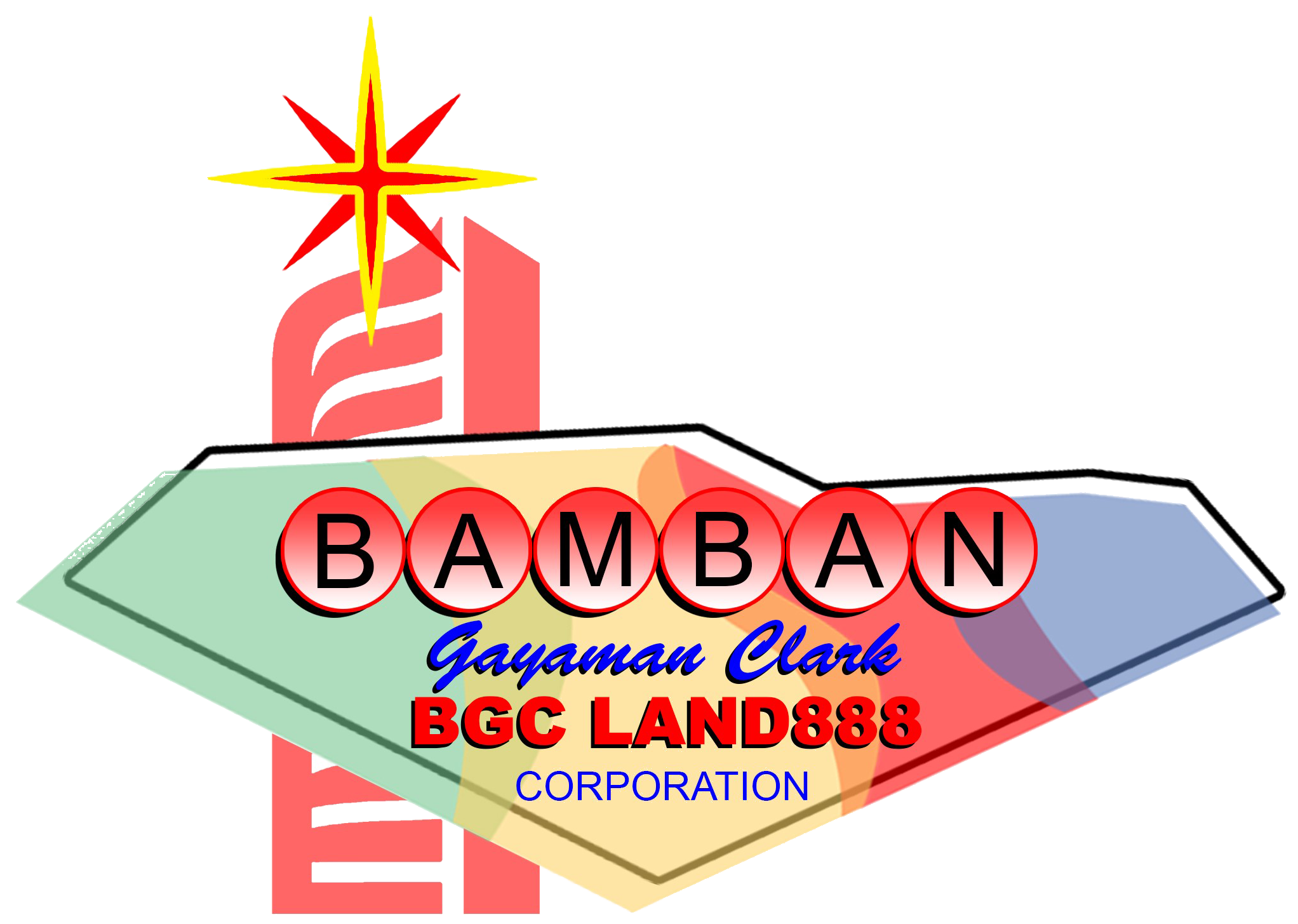Water Source Project
Overview:
The Need For Water Surface-Impounding Reservoir
- Way back in 1996, the Clark Development Corporation (CDC) bided-out the privatization of the Clark Main Zone’s Water Supply Distribution and Sewerage Collection and Treatment Systems, (the resulting winner of the bid shall forge a Joint-Venture with the government, represented by Clark Development Corporation, making up the 20% stake and the private-sector firm at 80%).
- The first winner of this bidding was Kemaman Terminal, a Malaysian firm, which commissioned a study, involving an inventory of existing water resources. This group, headed by Dr. Florencio Padernal, submitted a study report, indicating the sufficiency of existing deep wells used during the military operations by the Americans, during the years when it was still called the Clark Air Force Base (Fort Stotsenberg). It was to serve a limited number of active locators way back then.
- After a series of various changes that occurred through the years, the current water provider, for water distribution, is Clark Water.
- This 4,400 hectare zone was later to become a Special Economic Zone, and later divided into what will be known as the Clark Freeport Zone and the Clark Aviation Complex. By then, already consisting of more locators, with their expanded operations (after the initial master plans), and with the Clark Main Zone starting to urbanize. The adjacent cities and municipalities, sharing in the economic growth and with its population resulting in higher densities; the population growth, as work attracted in-migration from other parts of the country, would eventually result in a higher demand for water, wherein the primary source is only the extraction of water from underground aquifers.
- It was recommended then in 1996 (Kemaman Terminal Proposal), that management start exploring the development of a water surface-impounding system or a surface reservoir. Its vicinity has been noted for its year-round consistent meteorological patterns, ranging from intermittent thunderstorms, monsoon rains, to cyclonic events, as affected by the alternating southwest, and the northwest weather regimes.
- This provided steady replenishment of water to surface and subsurface storages. To this date, the rapid urbanization and industrial demand for water resources, poses the threat of a possible water crisis, similar to what is currently occurring in Metro Manila and its immediate environs. With the competing demands for water for irrigation (adjacent areas) and water supply, with the proliferation of highly urbanized and industrialized areas, the effect of massive siltation in rivers by lahar from the aftermath the Mount Pinatubo eruption in 1991, and the undeniable effects of “global climate change”, there could be a real crisis looming in water and energy, within the next 5-10 years.
- It has been almost 40 years, and it is noted that hardly any effort was being made since 1996, to start-up the development of this multi- faceted utility infrastructure(s). The challenge is now to address the need to study, by making an inventory of how this valuable resource (water), can be sustained, to develop & to match the projected demand of the future, to projections of 5 years to 20 years, and hence.
- Most surface impounding systems such as dams and/or a series of mini dams, have gestation periods of 5 years to a decade, on the average, and pose a variety of social and cultural challenges, requiring consensus- building strategies and a strong political will and commitment. And is a major investment on sustainable renewable resources. The project could be targeted as a multi-purpose project. Exploring its value as a water supply resource, thereby providing water security to existing and new developed areas, as to support irrigation to food production, industrialization, adding more opportunities for a balanced economy, in the countryside, and/or to provide electricity generation by providing the needed power for industries.
- Domestic treated water or freshwater, technically, is a finite and vulnerable resource, essential to life, development and the environment. It falls down to the ground, as precipitation. It is stored underground ,or subterranean flow and conveyed along surface streams, rivers and is easily lost to the sea, if not engineered and conserved efficiently. Due to the rise in sea level, there is always the threat of contamination of ground water by seawater, along coastal areas. This compounds the current deficiency in the availability of fresh water resources.
- Water development and management should be based on a participatory approach, involving users, planners, and policy makers at all levels. Water has an economic value in all its competing uses and should be recognized as an economic good, taking into account the affordability and equity criteria.
IDENTIFIED TARGETED INFRASTRUCTURES:
1. Main Dam:
• Concrete or an earth core dam (gravity type)
2. Secondary Dams:
• EarthEmbankment Dam
• Outlet Works-1: Water Supply to WTP+R-1
• Outlet Works-2: Water Supply to WTP+R-2
• Outlet Works-3: Water Supply to WTP+R-3
• Gravel-Fill-Earth Embankment Dam
• Concrete dam
3. Main Spillway (Flood Control & Irrigation):
• Irrigation Canal (Irrigation water to Tarlac River-Balog- balog Irrigation System-2)
4. Mini-Hydro Power Plants:
• Power Plant-2: ? MW to New Clark CityPower Plant-1: ? MW to Clark Freeport Zone + Sacobia
• Power Plant-2: ? MW to New Clark City
5. Conveyance Systems:
• Aqueducts/Pipelines (f=From Source to WTP to Reservoirs.
PROFILES OF TECHNICAL OPTIONS:
OPTION 1 AND OPTION 2

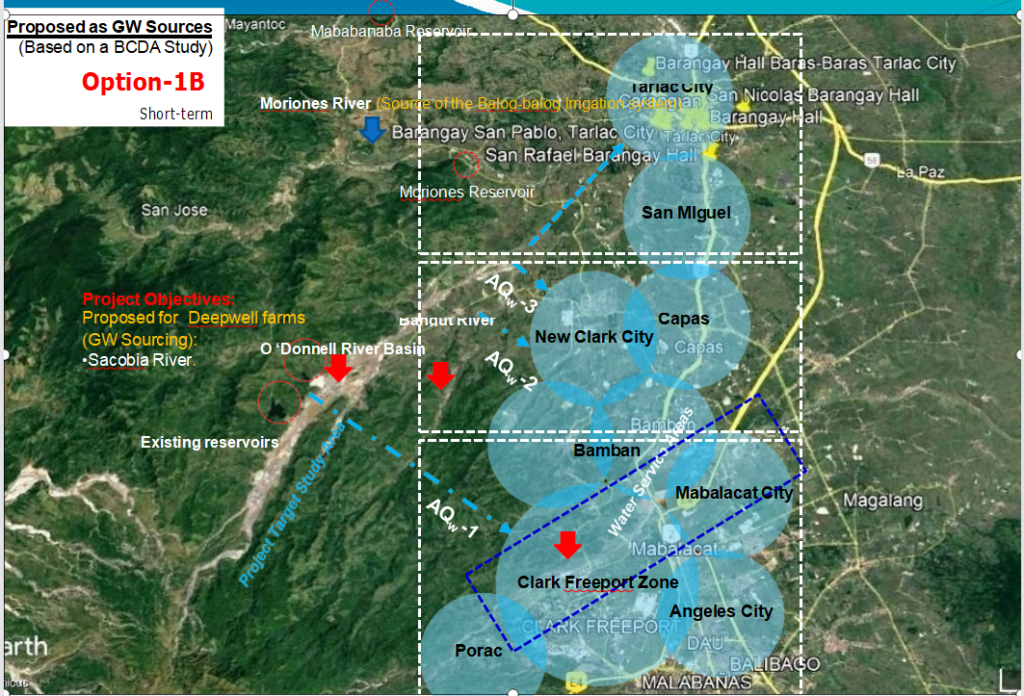
PROFILES OF TECHNICAL OPTIONS:
VICINITY OF TARGETED AREAS



PROFILES OF TECHNICAL OPTIONS:
FEASIBLE AREAS FOR EXPLORATION OPTION 3

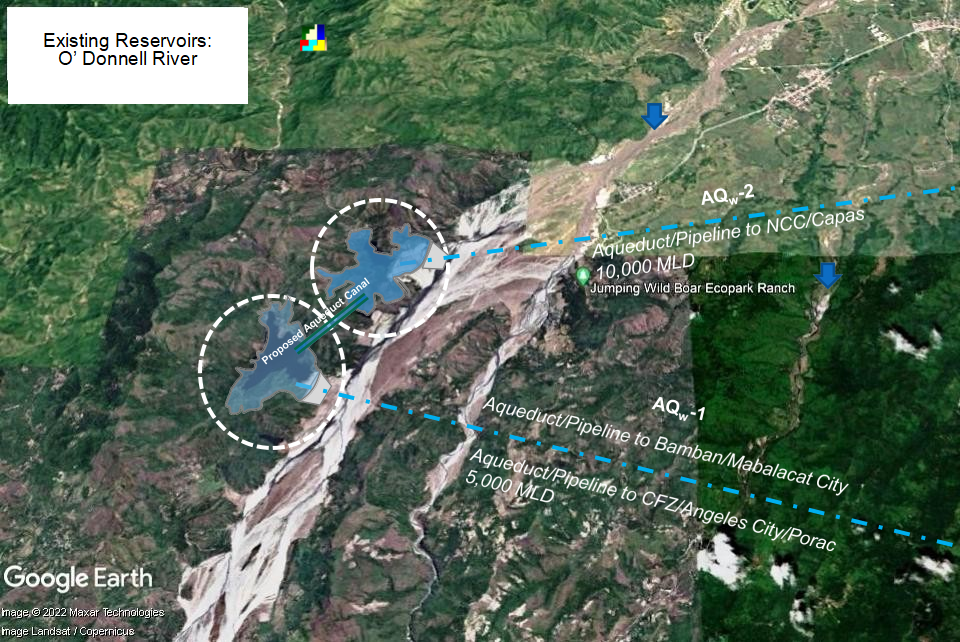
DEVELOPING OPTIONS:
MIX OF OPTIONS
• Option-1
• Option-2
• Option-3:
• Option-4: Option-1 + Option-2
• Option-5: Option-1 + Option-3
• If Sufficient to meet Water Demands for within 50 years;
• Preferred Option: Develop deepwell systems (short-term solutions) + Develop (in phases-to increase capacities) 2 existing reservoirs w/ reinforced concrete main dams & a connecting trans-basin canal/tunnel conduit.
OPTION-1:
GROUNDWATER SOURCING OF THE BANGUT RIVER, O’ DONNELL RIVER & SACOBIA RIVER
Advantages:
• Short-term limited & interim water supply source;
• Easier to develop; can be developed in a short period of time (1-2 years);
• Recommended for short-term, immediate needs (while development of surface water impounding systems are on- going (Option-3).
Disadvantages
• Not sustainable in the long run;
• Causing massive ground subsidence;
• With an large & increasing population density & coverage area (service areas), subject to eventual depletion of productivity of GW acquifers.
OPTION-2:
SURFACE WATER IMPOUNDING OF THE O’ DONNELL RIVER
Advantages:
• Multi-purpose objectives: water supply, irrigation, power generation (mini-hydro power plants) & flood control;
•Recommended as a long-term(100 years capacity) solution for the needs of the Expanded Clark Freeport Zone & the New Clark City, and adjacent communities (Expanded Metro Clark Area); if sufficiently funded & yields a high Rate –of-Return and/or B/C ratio.
Disadvantages
• Very long development period (6-10 years);
• Very wide coverage ( with comprehensive social & environmental impacts;
• Expected to have a long social & legal proceedings to gain public acceptance;
• Threat of heavy siltation from continuous Mount Pinatubo lahar drawdown; volume extraction for water supply & irrigation can be sensitive; lowering down of effective head can progressively reduce power generation of mini hydro components.
OPTION-2:
SURFACE WATER IMPOUNDING OF THE O’ DONNELL RIVER
Advantages:
• There are 2 existing reservoirs near the vicinity of Barangay Sta. Juliana, on the opposite side of O’ Donnell River; owners/operators will have to be determined; need to acquire the properties (most likely government-owned-part of the Zambales Mountain Range);
• The sites are nearest the Clark Freeport Zone (about 20 kilometers);
• The reservoirs shall be designed & developed to have a 50-year capacity (medium-term) for their respective service areas
• The reservoirs can be expanded/extended to fit the water demand requirements of the respective service areas (Clark Freeport Zones & vicinity & the New Clark City & vicinity).
Disadvantages
• Aqueduct Rights-of-Way (40-60 meter) would have to be acquired, traversing over Ancestral Domain lands (covered by NCIP);
• Aqueducts (about 20-km Tunnels/steel pipelines w/ 3-4 meter diameter, concrete-lined) are to be constructed;
• Systems require also a Water Treatment Plant (capacit TBD); before the start of service area; w/ provisions of pump houses & staging reservoirs (ground) to extend to other service areas;
OPTION 4 VS. OPTION 5
Disadvantages of Option 4:
• Project is too comprehensive; long gestation period; very expensive;
• High social-cultural costs (some barangays will possibly have to be relocated (submerged under the reservoir;
• High risk in terms of safety ; possible threat to highly-populated & high-valued properties & industries.
• Project may be favorable if the targeted benefit would be multi-purpose: water supply-irrigation-power generation – if favorable benefit-cost analyses.
TERMS & CONDITIONS: ODA
Korea (SK)
• Interest rate at 1.5% pa
• Maturity at 30 years
• 10-yr grace period
• Minimum 22% contribution
• Preferred
China (PRC)
• Interest rate at 3.0% pa
•Maturity at 20 years
• 5-yr grace period
• Minimum 5% contribution
• Geopolitical issue sensitivity: WPS
Japan
• Interest rate at 1.5% pa
• Maturity at 30 years
• 10-yr grace period
• Minimum 15% contribution
• Preferred
TERMS & CONDITIONS:
TECHNICAL ASSISTANCE
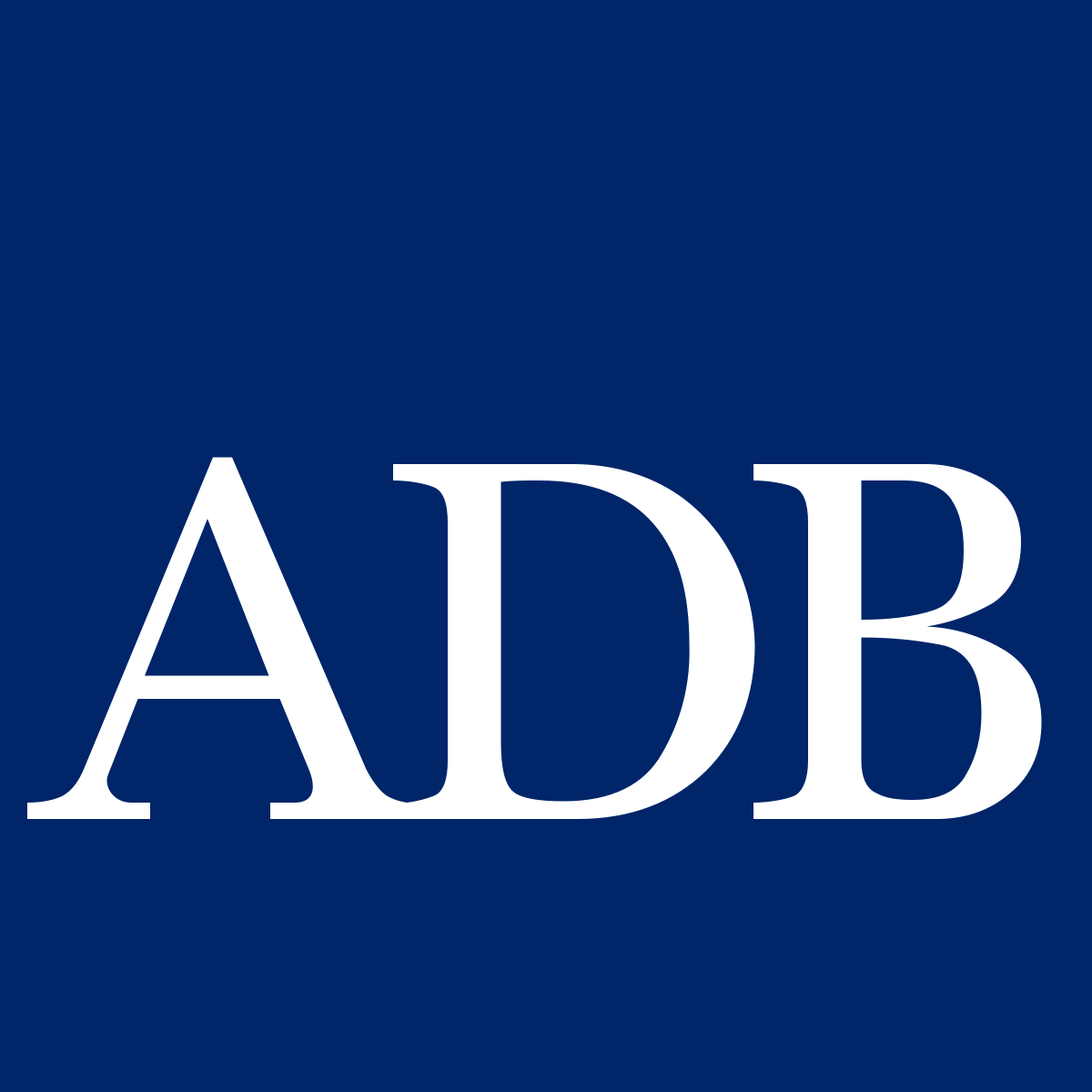
Asian Development Bank
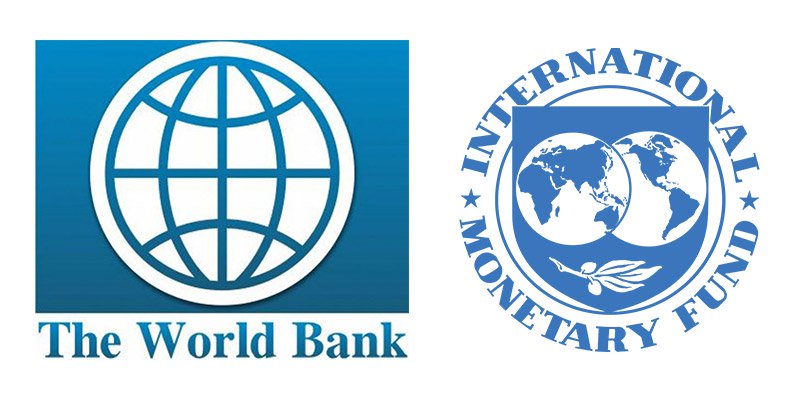
World Bank/IMF
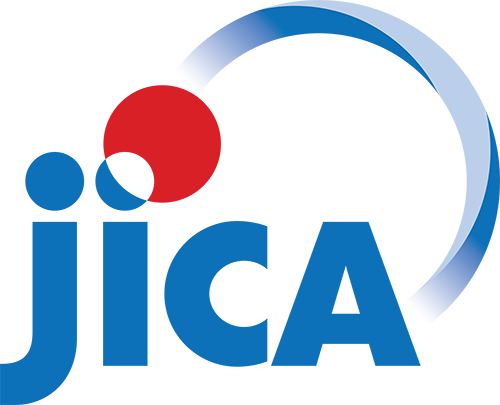
JICA-ADB
Example Project (MWSS):
Total Project cost is estimated at $4.97 million equivalent, of which $1.30 million is the foreign exchange cost (26%), and $3.67 million equivalent (74%) is the local currency cost.
Financing Plan :
It is proposed that the Asian Development Bank (ADB) provide a loan of $3.26 million or 66% of the project cost, to cover the entire foreign exchange cost and $1.96 million equivalent of the local currency costs. MWSS will finance the remaining local cost of $1.71 million equivalent. The Republic of the Philippines will guarantee the performance of MWSS’ obligations under the Loan Agreement.
Loan Amount and Terms :
A loan of $3.26 million from ADB’s ordinary capital resources will be provided under ADB’s London Interbank Offered Rate (LIBOR)-based lending facility. The loan will have a 10-year term including a grace period of 3 years, an interest rate determined in accordance with ADB’s LIBOR-based lending facility, a front-end fee of 0.5%, and such other terms and conditions as set forth in the Loan Agreement.
Total Project cost is estimated at $4.97 million equivalent, of which $1.30 million is the foreign exchange cost (26%), and $3.67 million equivalent (74%) is the local currency cost.
Financing Plan :
It is proposed that the Asian Development Bank (ADB) provide a loan of $3.26 million or 66% of the project cost, to cover the entire foreign exchange cost and $1.96 million equivalent of the local currency costs. MWSS will finance the remaining local cost of $1.71 million equivalent.
The Republic of the Philippines will guarantee the performance of MWSS’ obligations under the Loan Agreement.
Loan Amount and Terms :
A loan of $3.26 million from ADB’s ordinary capital resources will be provided under ADB’s London Interbank Offered Rate (LIBOR)-based lending facility. The loan will have a 10-year term including a grace period of 3 years, an interest rate determined in accordance with ADB’s LIBOR-based lending facility, a front-end fee of 0.5%, and such other terms and conditions as set forth in the Loan Agreement.
PROJECT DEVELOPMENT SEQUENCES:
Identifying “Project Participants”-establishing legal framework
Reconnaissance Survey/Preliminary Assessments of the Study Areas:
• Proposed Service Area(s);
• Proposed Water Resource Development Area(s);
• Determination of Design Parameters for the project;
Feasibility Study of the Project:
• Pre-feasibility Study
• Environmental Impact Study;
•Social Preparation of the sites & environment;
• Determining the Final Project Budget (ABC);
• Best/Best Use Study/Optimization/Value Engineering;
• Funding Acquisition;
• Tendering/Procurement;
• Preliminary Engineering;
• Detailed Design Development;
• Completion/Commissioning.
• Construction;
• Completion/Commissioning.
PREFERRED OPTION
OPTION-3 UPGRADING EXISTING RESERVOIRS
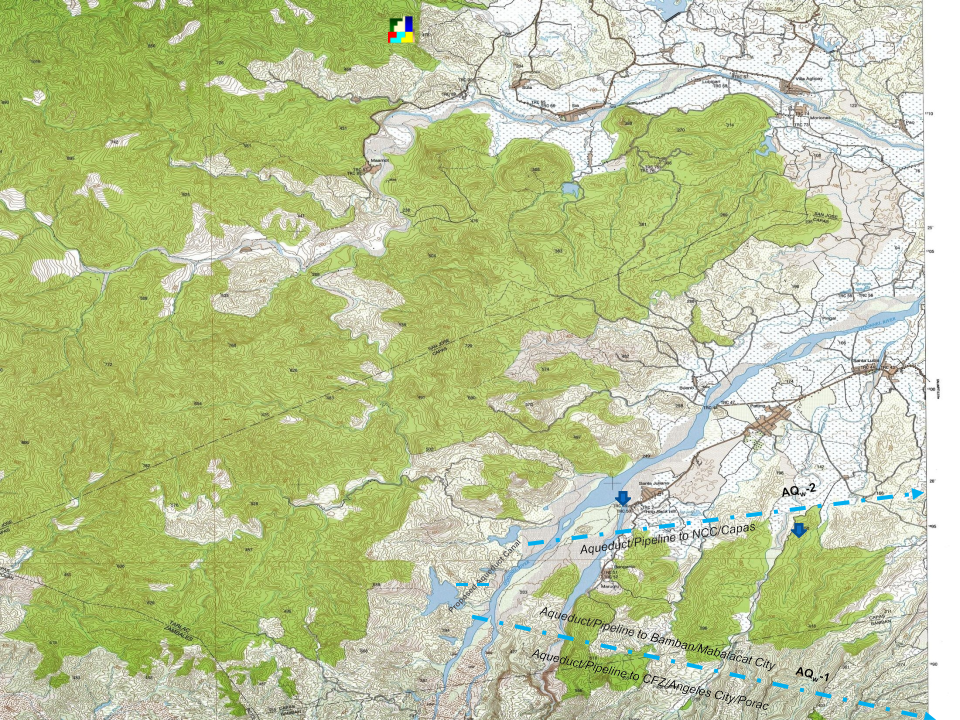
Objectives: Integrated Water Resources Management
Based on the following principles:
• Social Equity:
To provide adequate quantity & quality of water necessary to sustain human well-being;
• Economic Efficiency:
• To provide the greatest benefit to the greatest number of users possible;
• Environmental Sustainability:
To provide adequate allocation to sustain natural functioning.
EXPLORE:
Request a call back.
Bamban Gayaman Clark Ecozone Project is a masterplan of people and their environment, and vision of hope and prosperity where BGC Land888 Corporation adheres to our thoughts “We Create Life, “We Value Living.”
